Schwalbe G-One Ultrabite tyres review
Schwalbe's most aggressive gravel tyre supplies lots of grip and is surprisingly fast rolling – but it's best for rocky conditions as lateral grip in mud is a little lacking
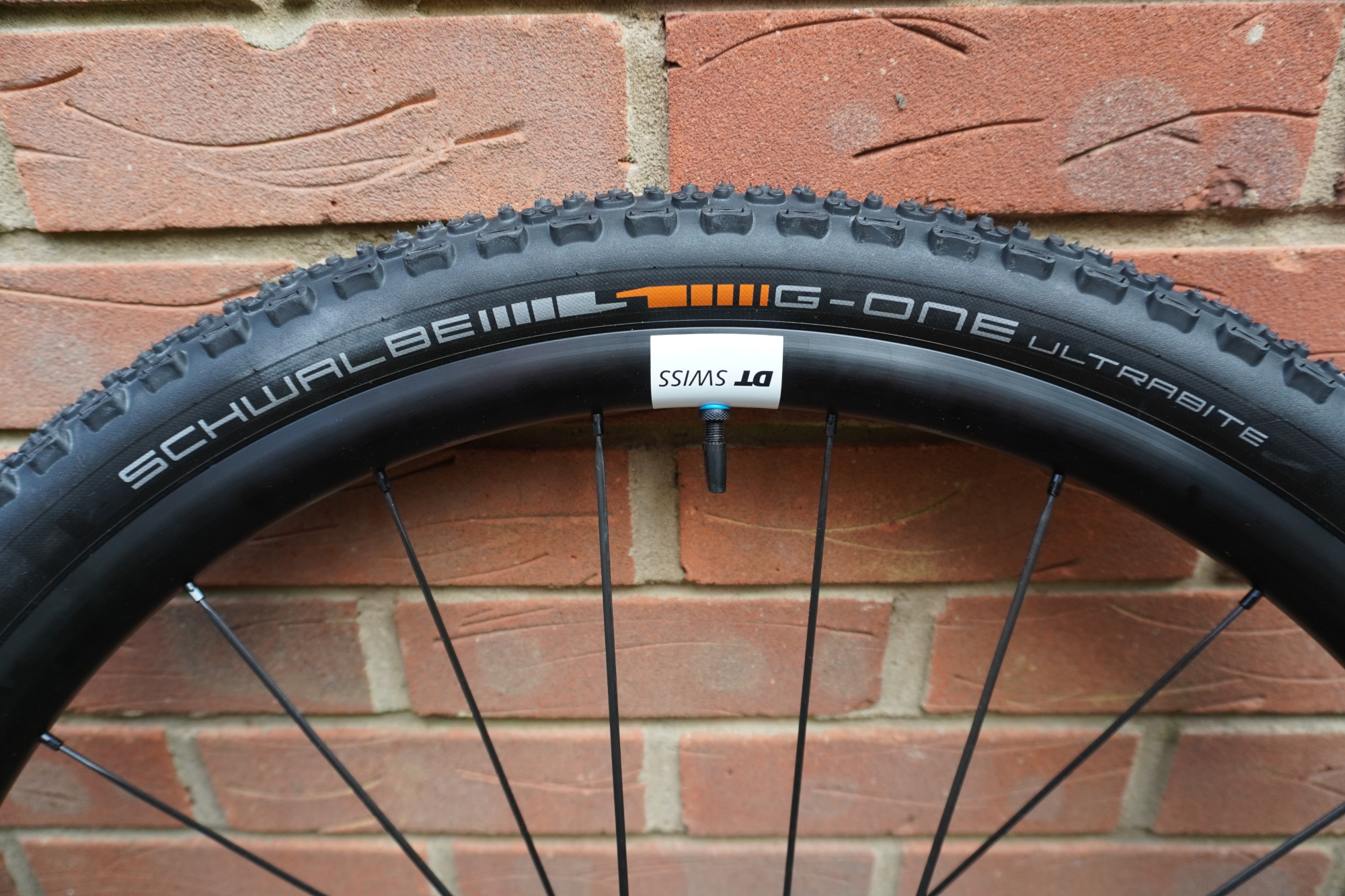
The Schwalbe G-One Ultrabite – particularly in its widest casing – is superb for loose and rocky terrain as well as having good mud-shedding capacity for when the slop covers the hardpack. Despite the aggressive tread, the Ultrabites do roll surprisingly quickly on the tarmac, albeit still slower than a more moderately treaded gravel tyre. The one downside is that in off-camber pure mud, the horizontal knobs of the centre tread don’t offer much in the way of lateral grip.
-
+
Good grip in rocky terrain
-
+
Surprisingly fast given the tread
-
+
Very easy to set up tubeless
- +
-
-
Lacks grip in off-camber mud
-
-
Pressures have to be run way below what's printed on the sidewall
-
-
Pricey
You can trust Cycling Weekly.

Added to the G-One line up in 2019 the Schwalbe G-One Ultrabite is – as you may have gathered from the hyperbolic moniker – Schwalbe’s most aggressive gravel tyre. In fact, it's one of the most aggressive gravel specific tyres around; there aren’t many alternatives that match this level of burliness.
>>>Read more: Best gravel bike tyres
As a side note, it’s helpful to know the way Schwalbe’s nomenclature works for tyres designed for drop bar riding: Pro One denotes the performance road bike line, G-One is the gravel line, while X-One signals the cyclo-cross line. In order of increasing gnar, the G-One line goes: Speed, Allround, Bite, Ultrabite.
Schwalbe G-One Ultrabite: construction
Starting with the tread pattern, down the centre of the tyre are wide, horizontal paddles which are designed to provide grip when winching up steep, rocky climbs. Additionally, these knobs have the purpose of increasing braking traction and minimising the stopping distance.
Moving to the shoulders of the carcass, the knobs here switch to a vertical orientation. This is intended to provide greater lateral grip when cornering hard with the bike leant fully over. The spacing of the knobs also opens up a little bit and the knobs get a little taller, offering the tyre more 'bite'.
But the tread pattern is only half the story. Although the tread is what provides the majority of the grip in soft or loose terrain – where the tyres can dig in – it’s the compound that dictates the grip on hard surfaces, such as rocks and roots.
Schwalbe’s Addix SpeedGrip compound was originally designed for mountain bike tyres and is the second fastest compound in that range. This is what’s used in the Ultrabite tyres and it provides a little more of an even balance between rolling resistance and tackiness than the race focused Addix Speed compound.
Naturally the Ultrabite, along with all the tyres in the G-One range, is tubeless ready and recieives Schwalbe’s TLE (Tubeless-easy) rubber stamp of approval. The sidewalls have been made quite beefy, which helps with the initial tubeless setup and prevents any weeping of sealant. The stoutness also serves to aid the tyres’ performance when used with very low pressures and makes them more resistant to cuts from rocks.
The ride
Setting up
Before riding, first comes the setup – and the Ultrabites presented none of the troubles that tubeless has such unfortunate connotations with. Popping them onto the rim was admittedly a tiny bit harder compared with a set of well-used clinchers, but it was very far from the wrestling match some tubeless tyres present.
The initial inflation was a complete breeze, with the tyres popping onto the rim on the first try and continuing to hold pressure without a problem – most impressive.
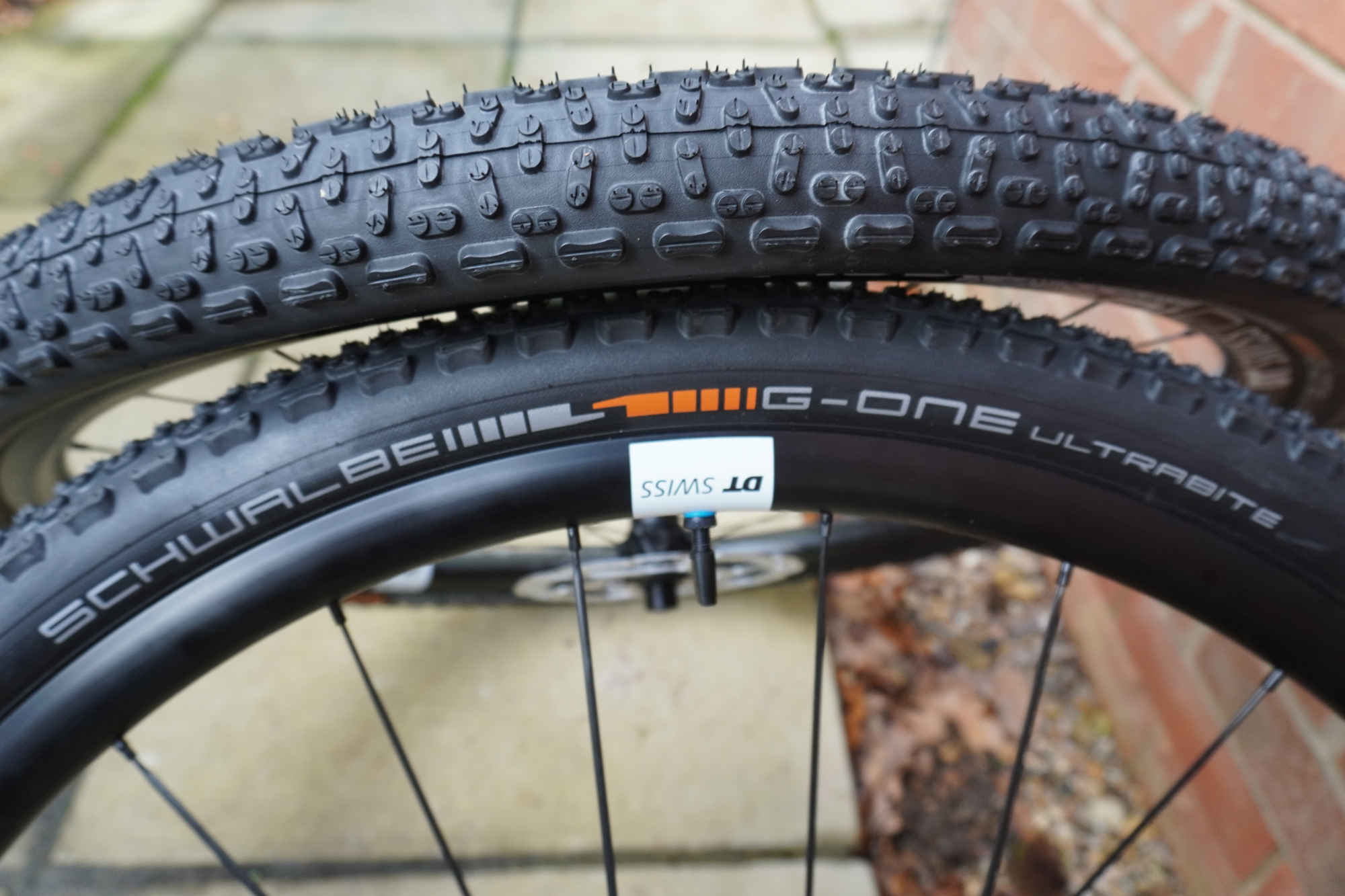
Swapping the tyres onto a different set of rims two weeks after the first setup, it became apparent that I had actually forgotten to add sealant to the front tyre – which cast an interesting angle on my initial experience.
Having held its pressure so well over the first two week, I had no reason to suspect that the front tyre was missing the sealant. Also, in terms of puncture protection, the carcass was clearly robust enough that it had shrugged off thorns and flints and didn’t requiring sealant to plug any holes.
Obviously, I would prefer the reassurance sealant provides, so I did make doubly sure to add some to both tyres on the second wheelset.
Hitting the trails
In terms of the ride feel, pootling off along the roads and to the start of the trails, I was instantly struck by the speed with which the Schwalbe G-One Ultrabite rolled. Being 50mm and with an aggressive tread, they were admittedly a bit slower than a set of 40mm semi slicks – but they were far more rapid than looks would suggest and certainly didn’t feel like a drag on my ride.
Hitting the trails and onto some hardpack coated with a muddy sheen, the knobs performed well at biting into the dirt and quickly shedding the clag. Leaning over into the corners, the side and transition knobs hooked up nicely and inspired plenty of confidence with their predictable grip.
Moving onto to some loose, rocky tracks, the tyres continued to impress – this is definitely the terrain they most excel at. The tread does a good job at providing grip, even with the loose shingle and larger flints shifting under the wheels. The high volume of the tyre means that even when running low pressures, there is enough cushion to ward off rim strikes when blasting it down the other side – something that is often a danger with narrower tyres.
In deep mud the Ultrabites performed a commendable job at quickly shedding the mud and when winching up steep and sloppy climbs, the tread was reasonably good at digging in. But there was one notable area in which the tyres did not perform so well: any kind of off-camber pure mud – the type that doesn’t have any hardpack hidden underneath.
To be fair to these tyres, it is only because the grip is so good elsewhere that the lack of it in these conditions was such a contrast – they would still present an upgrade if you were coming from a set of semi-slicks. However, it really didn't take much of a muddy camber for the front end to just slip away, as if it were black ice rather than mud.
If you are looking for a tyre that performs well in primarily muddy conditions, the Ultrabite is not it. The X-One bite would be the one to go for in Schwalbe’s range of tyres.
Digging into the tread
The cause of the lack of grip on off-camber mud is quite clear when you look at the tread pattern. Although the horizontal knobs on the centre of the tread may be great for grip when braking in a straight line or hooking up on a loose climb, and the vertical tread on the shoulders may be great for digging in around corners. But when trying to cycle along an off-camber straight, those horizontal centre knobs do very little to prevent the wheel from washing out sideways.
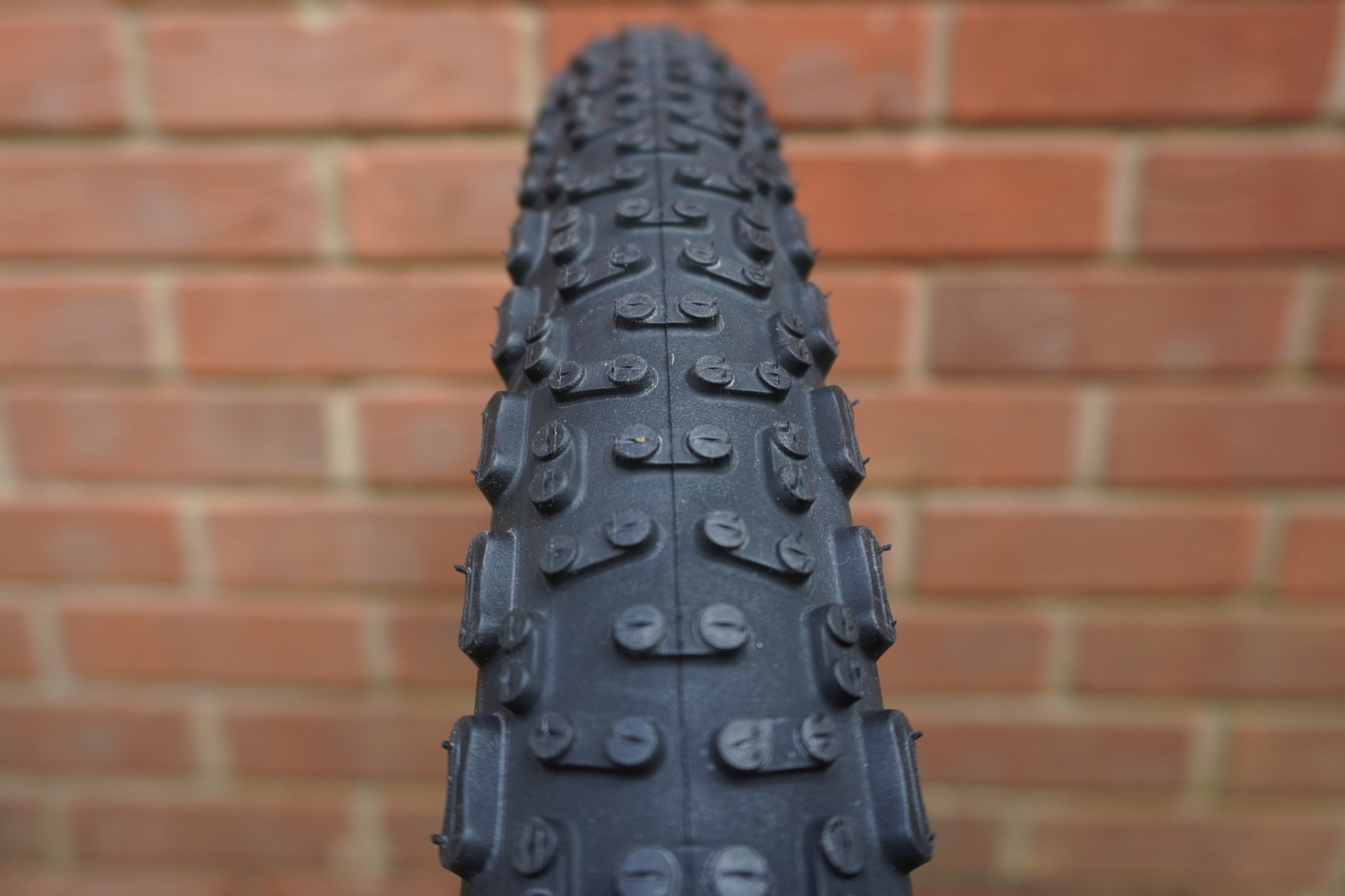
I would have thought this could be remedied by simply rotating the centre horizontal knobs through 90° so that it is also vertical and can act a little like the keel of boat, helping to keep things tracking in a straight line.
I asked Jakob Massen, product manager at Schwalbe, about this and he explained that although rotating the centre knobs in such away would aid grip in those circumstances, it would negatively impact the tyres’ traction on steep climbs and when braking. And I have to say, on balance I think Schwalbe has struck the right compromise.
The Schwalbe G-One Ultrabite is not designed for pure mud – that’s the purpose of the X-One Bite – and you would want a narrower tyre for those conditions anyway, as thick mud significantly amplifies rolling resistance. Although it can cope with more than other tyres, its real forte is on loose, rocky terrain where the tread, compound and volume all perform excellently in concert with each other.
One final point to make is that the recommended pressure range printed on the sidewall seems way out. Mine suggest 45 to 65psi for the 50mm version. To put that in perspective, at 67kg body weight, I run around 10psi less than that minimum in 33mm cyclo-cross tyres. Personally, I settled for 18psi front and 20psi rear with the Ultrabites.
I mentioned this discrepancy to Massen and he helpfully informed me that Schwalbe is aware of this as an issue and in future only a maximum recommended pressure will be given – you’ll be free to go as low as you like!
Value
At £60, the Schwalbe G-One Ultrabite is undoubtably a premium option, although it's not alone in this price bracket.
The WTB Resolute TCS SG2 has similar claims of performance, but less aggressive and narrower spaced knobs which make it not grippy or as good at clearing mud. But retailing for £54.99, they are a little cheaper.
A closer contender in terms of tread bite is the René Herse 700C x 48 mm Oracle Ridge TC Tire. But if you thought £60 was a lot to spend of a tyre, you’ll baulk at the £87 price tag here.
In all, with far fewer aggressive gravel tyres on the market than their shallower-treaded siblings, there aren’t so many tyres to choose from. But there is also the Performance line of the Ultrabite tyres which share the same tread pattern but use a cheaper compound than the Evolution line and come in at £45. They are also perhaps the only tyres that are actually cheaper with tan sidewalls.

Thank you for reading 20 articles this month* Join now for unlimited access
Enjoy your first month for just £1 / $1 / €1
*Read 5 free articles per month without a subscription

Join now for unlimited access
Try first month for just £1 / $1 / €1
Get The Leadout Newsletter
The latest race content, interviews, features, reviews and expert buying guides, direct to your inbox!

After winning the 2019 National Single-Speed Cross-Country Mountain Biking Championships and claiming the plushie unicorn (true story), Stefan swapped the flat-bars for drop-bars and has never looked back.
Since then, he’s earnt his 2ⁿᵈ cat racing licence in his first season racing as a third, completed the South Downs Double in under 20 hours and Everested in under 12.
But his favourite rides are multiday bikepacking trips, with all the huge amount of cycling tech and long days spent exploring new roads and trails - as well as histories and cultures. Most recently, he’s spent two weeks riding from Budapest into the mountains of Slovakia.
Height: 177cm
Weight: 67–69kg
-
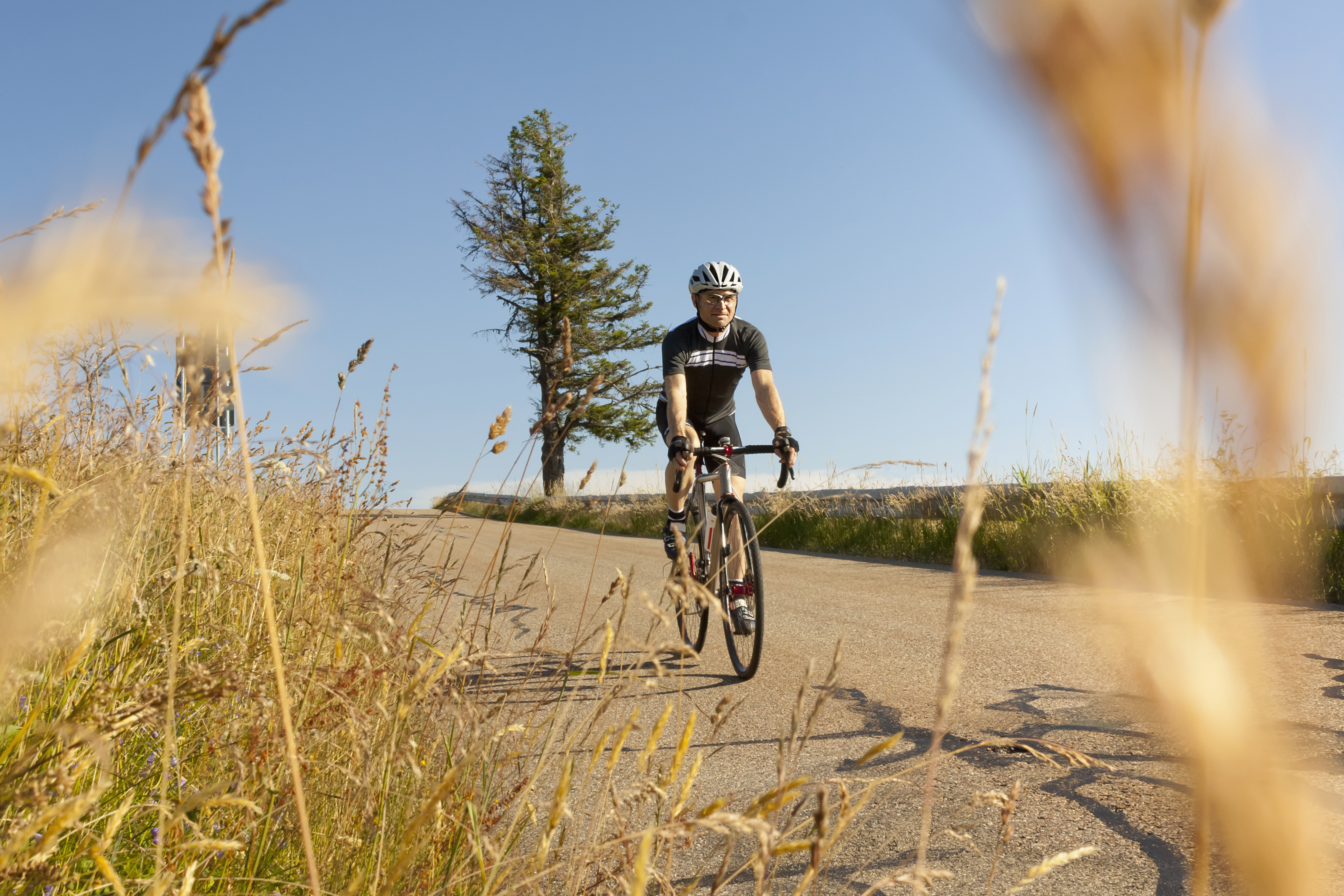 Hayfever and your riding: how to combat it as the pollen strikes
Hayfever and your riding: how to combat it as the pollen strikesExplanations, medications and holistic measures to make your spring and summer riding more enjoyable
By James Shrubsall Published
-
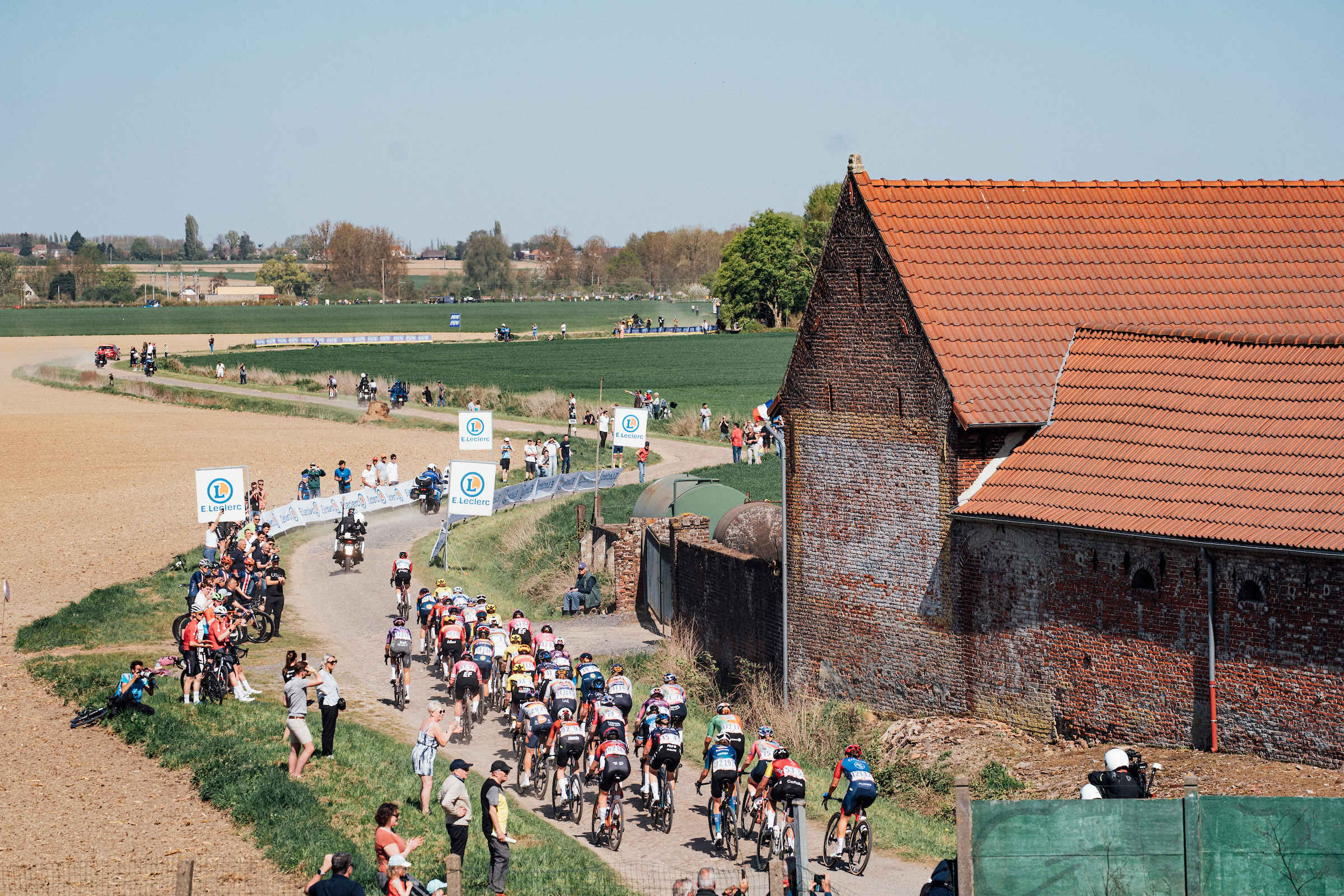 I went to Paris-Roubaix Femmes and was shocked at how it is still treated as secondary to the men’s race
I went to Paris-Roubaix Femmes and was shocked at how it is still treated as secondary to the men’s raceThe women’s version of the Hell of the North is five years old, but needs to be put more on equal footing with the men
By Adam Becket Published
-
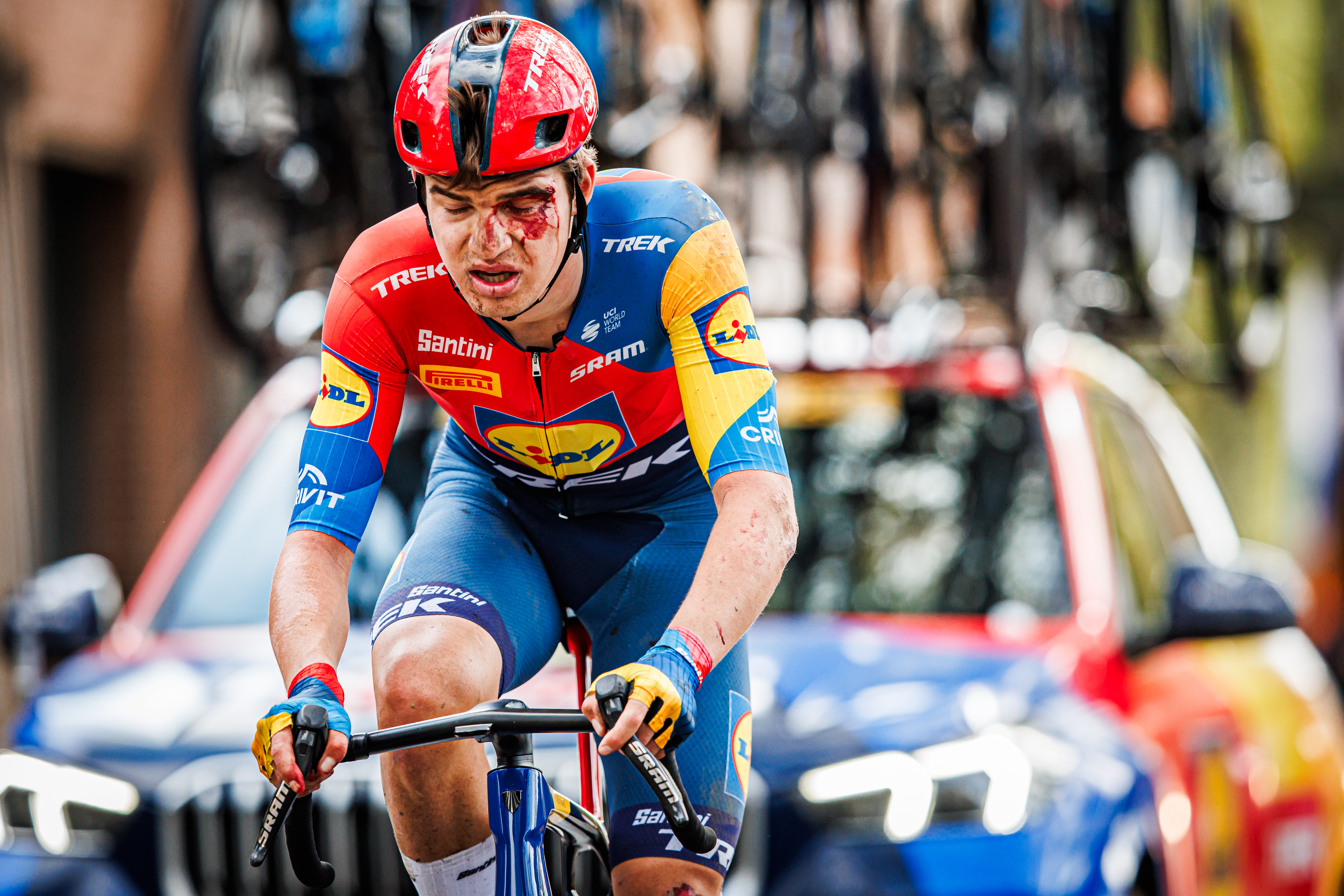 Broken hips, hands, and collarbones: Paris-Roubaix's lengthy injury list lays bare brutality of race
Broken hips, hands, and collarbones: Paris-Roubaix's lengthy injury list lays bare brutality of race"It probably wasn't the best idea to continue," says one of weekend's many wounded riders
By Tom Davidson Published